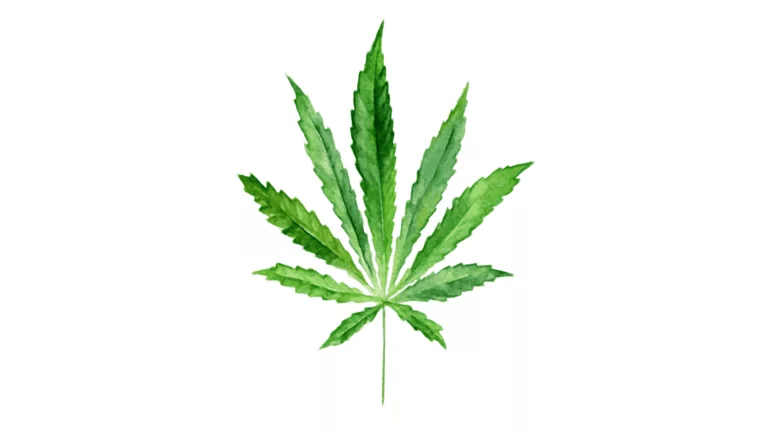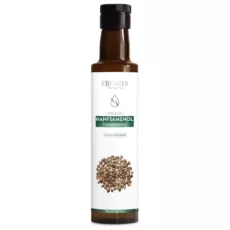Hemp

Hemp (Cannabis), also called “kanabi,” is a genus of flowering plants from the hemp family (Cannabaceae). Cannabis is dioecious, meaning it has male and female plants.
Hemp is one of the most ancient known plants on earth, as well as one of the earliest cultivated by humans. The plant is known by many names, bearing witness to its cultural significance. In an Assyrian cuneiform text from 685 BCE it is called “kunubu,” and in the following century its name appears as “kannapu,” from which the Greek-Latin “cannabis” derives.
Hemp fibers and seeds have been found in the most ancient layers of Eurasian cultures. Born in Central Asia, hemp spread across the world thanks to humans. The oldest evidence comes from archaeological excavations on the island of Taiwan, where ceramic vessels impressed with hemp rope were found in layers dating back 12,000 years.
In the ancient world, hemp was known as an exotic plant. In the Odyssey, Homer describes how the beautiful Helen fell into depression and was cured with a medicine brought from Egypt. The drug was called nepenthē (“banisher of grief”), which many modern linguists see as a slightly altered Egyptian name for cannabis—nibenji. Archaeological excavations at Ukok, near the border of Russia, China, Mongolia, and Kazakhstan, revealed 2,000-year-old mummified remains of a Scythian queen, elegantly laid out in white silk with a small ceremonial container of cannabis. Archaeologists believe the Scythian hemp “was smoked for pleasure and used in pagan ritual.”
Thracian tribes burned the female flowers of cannabis as a mystical incense that induced trance. The special talents of Thracian sorcerers were attributed to the “magical heat” produced by burning cannabis, believing the plants dissolved in the flames and then re-gathered in the person who inhaled the vapors. Cultivation of hemp in China began as early as the 28th century BCE, when the legendary second emperor Shennong taught his subjects to braid rope from the plant. In a treatise from 220 CE, the physician Hua Tuo recommended wine with added cannabis extract as an anesthetic.
Hemp has a long history in India, shrouded in legend and religion. The earliest evidence of cannabis use in India is found in the Vedas and sacred Hindu texts dating from 2000–1400 BCE. The Hindu text Atharvaveda even lists cannabis as one of the five sacred plants of the earth that relieve anxiety. The Vedas call hemp a source of happiness, a giver of joy, a liberator. The god Shiva is often associated with cannabis, known as bhang in India. According to legend, after a quarrel with his family Shiva withdrew into nature. Drained by the conflict and the hot sun, he fell asleep beneath the leaves of cannabis plants. Upon waking, curiosity led him to sample the leaves. Instantly refreshed, Shiva made cannabis his favorite food and became known as the Lord of bhang. From antiquity to the present, cannabis leaves have been used to prepare a drink called bhang, consumed during religious ceremonies and festivals in India.
Cannabis has been closely tied to esoteric currents in both Hinduism and Islam. Hindus use bhang in religious ceremonies such as Holi, and ascetics use it to approach the divine. Its hallucinogenic properties were employed in esoteric practices like yoga and the ascetic discipline of the sadhus—Indian ascetics who renounce material life and use cannabis to seek spiritual freedom, transcend ordinary reality, and achieve transcendence. In 1842 the physician W. B. O’Shaughnessy became the first popularizer of ganja, the potent Indian cannabis, in England through his Bengal Pharmacopoeia. Cannabis was added to the list of standard medicines and appeared on the shelves of every pharmacy.
In the 18th century the famed biologists Linnaeus and Lamarck debated how many species of hemp existed. It was agreed that the European variety would be called Cannabis sativa and the Indian one Cannabis indica, but modern science regards them as different races of a single species and has adopted only the former name. Today hemp has countless proven applications in nearly every sphere of industrial production. It is grown for its fibers—extremely strong and moisture-resistant—which are used to make rope, textiles, paper, and more. Its seeds are rich in oil and protein and are an excellent food, medicine, and energy source. This places hemp among the most valuable resources on earth.








